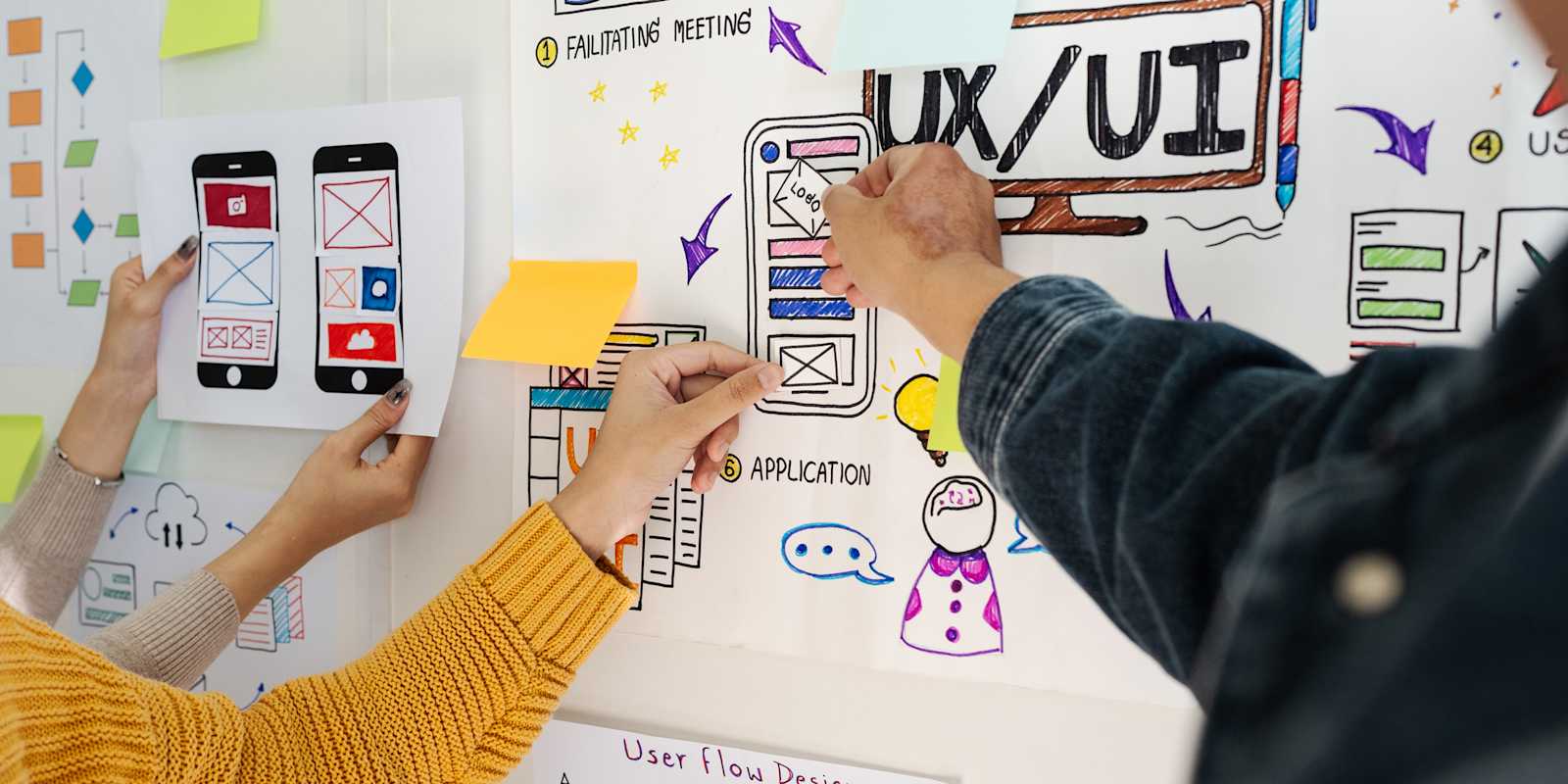Designing for mobile vs desktop: What’s the difference?
Explore the essential differences between designing for mobile and desktop interfaces, and how to create optimised, user-friendly experiences for each platform.

Arabella Cronin
1 Aug 2025

In a world where users jump between mobile and desktop devices daily, creating designs that cater to each platform's unique demands is vital. Mobile and desktop experiences differ significantly in screen size, user interaction, and content consumption patterns, so understanding these differences is essential to creating optimised, seamless experiences. Let’s dive into what sets mobile and desktop design apart and how to approach each effectively.
Understanding screen size and layout differences
One of the most obvious differences between mobile and desktop design is screen size. On desktop, designers have ample space to use complex layouts, multiple columns, and detailed visuals. On mobile, however, screen real estate is limited, requiring more focus on simplicity and efficiency.
Desktop design layouts:
Often utilise grids with multiple columns to display more information.
Include horizontal navigation bars, often at the top of the screen.
Allow larger visuals and more detailed content without overwhelming the user.
Mobile design layouts:
Focus on single-column layouts for easy vertical scrolling.
Use hidden or compact navigation menus, like a hamburger menu.
Emphasise quick interactions with large buttons, avoiding dense content.
Navigation and interaction styles
Navigation is a critical aspect of user experience, and it differs drastically between mobile and desktop. Desktop users have the benefit of precise cursor control, allowing them to interact with smaller buttons and detailed menus. Mobile users, however, rely on touch interactions, which means the design must accommodate finger-friendly elements.
Desktop navigation:
Complex, multi-tiered navigation is possible due to precise mouse control.
Hover effects are common for interactive elements, making them feel dynamic.
Larger screens mean secondary navigation (such as sidebars) can be displayed prominently.
Mobile navigation:
Primary navigation is often hidden in a collapsible menu to save space.
Buttons and icons are larger to accommodate tap interactions.
Limited space necessitates a focus on essential functions, reducing complexity.
Content prioritisation and readability
Content is consumed differently on mobile versus desktop. Mobile users tend to scan for key information due to smaller screen size and on-the-go behaviour, while desktop users often engage more deeply with content.
Desktop content design:
Can accommodate longer text sections, videos, and detailed graphics.
Designers have the freedom to create layouts that encourage reading.
Content like sidebars, banners, and footers can add value without cluttering.
Mobile content design:
Content should be concise and scannable, focusing on headers and bullet points.
Visuals should be optimised for fast loading on mobile networks.
Non-essential content should be minimised to reduce clutter.
Performance considerations for each platform
Mobile and desktop users expect different load times and performance levels. Desktop users are often on stable, high-speed networks, allowing for richer visuals and animations. Mobile users, however, might be on cellular data, making speed and efficiency more crucial.
Desktop performance optimisation:
Rich media, animations, and high-quality graphics can be used with minimal impact.
Background tasks like auto-refreshing or live updates can improve user experience.
Load time standards are slightly more flexible than mobile.
Mobile performance optimisation:
Lightweight visuals and compressed images help improve load times.
Responsive and progressive loading techniques enhance usability on slower connections.
Designers should avoid heavy animations or elements that may drain battery.
Device-specific interaction elements
Mobile and desktop devices offer different interaction elements that designers can leverage. Understanding these device-specific options helps to create an intuitive, user-friendly experience for both.
Desktop-specific interactions:
Keyboard shortcuts and hover states enhance productivity and ease of use.
Resizable windows and drag-and-drop functionality support multitasking.
Tooltips provide extra information on hover without cluttering the interface.
Mobile-specific interactions:
Swipe gestures allow quick navigation through content.
Tap-and-hold features offer additional functionality without crowding the screen.
Built-in device features (like GPS, camera, or voice control) can be integrated seamlessly.
Responsive and adaptive design solutions
With users constantly switching between devices, responsive and adaptive design strategies ensure a cohesive experience. Responsive design uses a flexible layout that adjusts to any screen size, while adaptive design creates separate layouts optimised for each device type.
Responsive design benefits:
One codebase serves all screen sizes, simplifying updates.
Allows seamless transition between desktop, tablet, and mobile.
Flexible approach that scales with new screen sizes and devices.
Adaptive design benefits:
Tailored layouts for each device create a custom experience.
Often performs better as it only loads necessary elements.
Can account for unique behaviours across different devices.
The takeaway: Designing for both platforms without compromise
Designing for mobile and desktop requires balancing the unique needs of each platform. By keeping these differences in mind, designers can create flexible, engaging experiences that look and feel great across devices. Using a combination of responsive and adaptive techniques can ensure a smooth user experience without compromising on functionality or aesthetics.
Blog
Latest insights from Yito
Creative ideas, practical tips and insider info.

Insights
•30 Apr 2025
Why Monzo feels more like a community than a bank
Monzo isn’t just another bank. They’re a community-driven financial service built on transparency, real-time insights, and customer feedback. Here’s how they redefined banking and built a loyal customer base.
Read more

Insights
•23 Apr 2025
Beyond the algorithm: How to build a marketing strategy that lasts in 2025
Marketing algorithms change constantly, but brand loyalty is built on relationships. Learn how to future-proof your strategy by owning your audience, providing value-first content, and embracing human-centric marketing in 2025.
Read more

Insights
•16 Apr 2025
The best digital marketing tactics for 2025 (and how to nail them)
Stay ahead of the game in 2025 with AI-driven content, micro-influencer marketing, and interactive email campaigns. Learn how to implement these cutting-edge digital marketing tactics for maximum engagement and ROI.
Read more
Contact
Let's chat
Got questions? Have some thoughts? Just want to say hello? We'd love to hear from you! Whether you're ready to start a project or just exploring your options, we're here to help. Book a discovery call with us today or drop us an email here.
Unlimited requests
Pause or cancel anytime
Lightning turnaround


